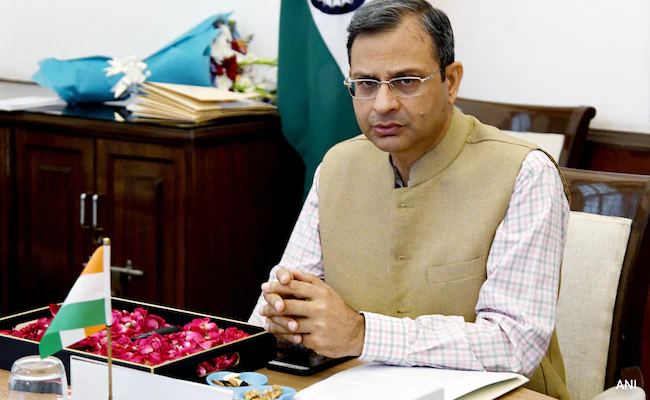Sanjay Malhotra to Become 26th RBI Governor
Sanjay Malhotra is set to officially take over as the 26th Governor of the Reserve Bank of India (RBI) on Wednesday. This comes as Shaktikanta Das, the outgoing RBI Governor, completes his term and steps down from office this evening. Malhotra, speaking to reporters at the Ministry of Finance in Delhi’s North Block ahead of his appointment, emphasized the importance of considering all viewpoints. He expressed his commitment to making decisions that serve the best interests of the Indian economy.

Government Approves Sanjay Malhotra’s Appointment
The Appointments Committee of the Cabinet recently approved Malhotra’s appointment as the next RBI Governor. He will begin his three-year term on December 11. Malhotra, who is 56 years old, brings a wealth of experience to the role. He holds a B.Tech degree in Computer Science and Engineering from IIT Kanpur and a Master’s in Public Policy from Princeton University. Currently serving as Revenue Secretary in the Ministry of Finance, Malhotra has also held the position of Secretary in the Department of Financial Services.
Challenges Await the New RBI Governor
As he assumes leadership at the central bank, Malhotra will face several economic challenges, particularly balancing growth and inflation. The Indian economy is currently grappling with a slowdown, as evidenced by a GDP growth rate of 5.4% for the July-September quarter—the lowest in nearly two years. In response, the RBI recently revised its growth projection for FY25 down from 7.2% to 6.6%. Despite this adjustment, the central bank has maintained a neutral stance on monetary policy while continuing its efforts to keep inflation within its target range of 4% (+/- 2%).

Signs of Economic Slowdown
Malhotra is taking charge at a time when various indicators point to an economic slowdown. Credit growth has significantly declined, consumer demand—particularly in urban areas—has weakened, and government capital expenditure, both at the state and central levels, remains subdued. These factors underscore the complex economic environment he will navigate as the head of the RBI.
Differences Between RBI and the Government
The outgoing Governor, Shaktikanta Das, has made efforts to address economic challenges during his tenure, including a 50-basis-point cut in the Cash Reserve Ratio (CRR) to inject liquidity into the financial system. However, differences have persisted between the government and the RBI, particularly regarding interest rate policies. High interest rates, combined with regulatory measures such as higher risk weights for unsecured loans and new provisioning requirements for project loans, have contributed to slowing economic growth. The delay in cutting policy rates has been a notable point of contention, further complicating the relationship between the RBI and the government.

